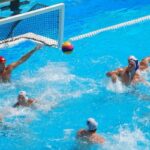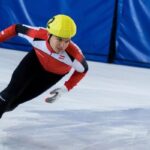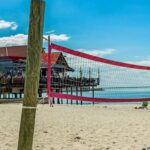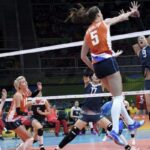We explain what paddle tennis is, what its playing field is like and the elements it uses. In addition, we tell you how its origin and its history were.
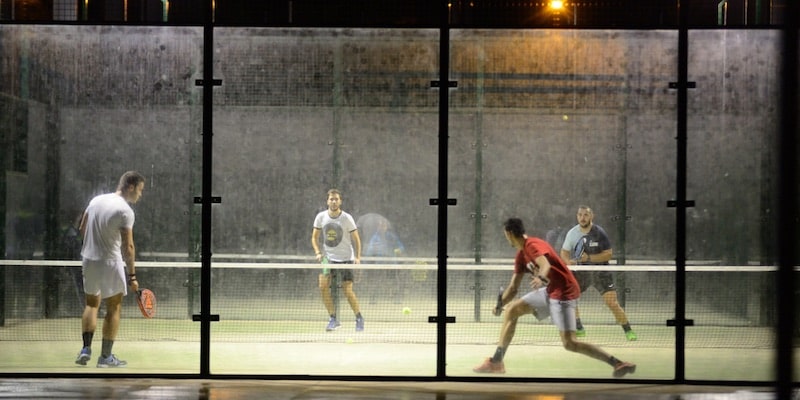
What is paddle tennis?
Padel, also sometimes called padel-tennis, It is a racket sport very similar to tennis, but played on a shorter court with walls on the sides and in the background. The purpose of the game is to bounce the ball on the opponent's court by hitting it with a wooden racket called shovel.
The term “pádel” is the Castilianization of the Anglo-Saxon word paddlewhich can be translated as “rowing”, and which in English is the name of the aforementioned rectangular wooden rackets that are attached to the player's wrist by a strap. It is possible to refer to this sport using its original Anglo-Saxon voice, but in these cases it must always be written with italics, as it is a loan from English, that is, an Anglicism.
Padel is a sport of cooperation/opposition, normally played in pairs, so that each one is on one side of the court separated by a low net, similar to that of tennis. Normally three sets are played and the team that wins two of them is declared the winner, for which it must defeat the opponent by a minimum difference of two points in each one, based on the six points accumulated. That is, the team that reaches or exceeds 6 points and has two more points than the opponent, will win the set.
It is a professional sport, although not Olympic, whose maximum competition is the World Paddle Championship, held biannually since 1992. Numerous international teams meet there, both in their male and female versions. The team that has won the most titles in the history of padel (until 2022) is Argentina (10 in men's and 8 in women's), followed by Spain (4 in men's and 7 in women's).
See also: Types of sport
History of padel
The Mexican Enrique Corcuera is considered the inventor of paddle tennis, who decided in 1962 to combine fronton and tennis thus creating the first paddle tennis court in history in his home in Las Brisas, Acapulco. Corcuera made this variant of the sport known and thus captured the attention of the Spanish prince Alfonso de Hohenlohe (1924-2003), who built the first two padel courts in Spain, and from there it spread to Argentina, Brazil, Uruguay, Chile and other Latin American nations, at a rate such that In 1985, the professionalization of the new sport began.
The first international padel competition took place in 1988 in Mar del Plata, Argentina and at the beginning of the 1990s the first world paddle tennis championship in history was organized. From then on, the sport gained true international prominence and its epicenter migrated from Argentina to Spain. There, in 2005, the Padel Pro Tour began, one of the largest international circuits, which in 2012 was replaced by the current World Padel Tour.
At the beginning of the 2020s, paddle tennis is one of the fastest expanding sports in the world and talk begins about its eventual Olympic recognition. It is a popular sport in more than 75 countries, including Mexico, Argentina, Brazil, Spain, Canada, Paraguay, Uruguay, Chile, the United States, the United Kingdom and Portugal.
Padel fundamentals

The objective of paddle tennis is accumulate points to win each set, making the ball hit the floor of the opponent's field at least twice. The team that accumulates more than six points and surpasses the opponent by two points will win the set, and the couple that wins two of the three sets of the match will be the winner. A point in favor will also be counted when:
- Players from the opposing team touch the ball with their body or something other than the paddle, or touch the ball twice in a row.
- The opposing team hits the ball against a wall in the opposing field without it having touched the ground in the opposing field first.
- The opposing team takes the ball out of the field without it having touched the ground of the opponent's field first.
- A player from the opposing team touches the net or steps on the opposite field.
The teams will change fields every time the sum of the points is odd, and they must touch the ball only to make it pass to the opposing side. For this, they have different offensive and defensive hits, such as:
- The volley short shot that is made near the net and without the ball bouncing.
- The finishing an intense and powerful blow that seeks to put an end to an attack situation, marking the definitive point. This shot will be more difficult the further away from the net you are.
- The tray a blow similar to the shot that is performed with the arm extended and in a diagonal direction.
- The viper a fast attacking shot that makes the ball almost roll on the ground.
- The serve blow with which a game sequence begins.
Padel playing field
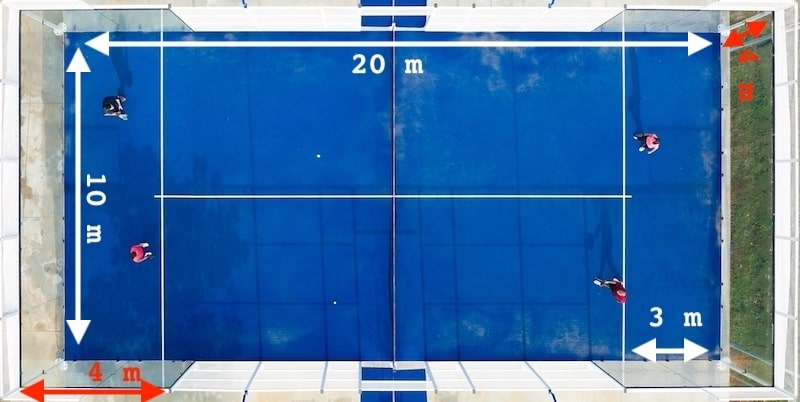
Padel is played in rectangular courts ten meters wide by twenty meters long, closed by walls three meters high U-shaped on its lateral side. In the middle of the field, the network is extended by dividing it into two equal parts.
In its internal space, the court is closed by the backs and sides. The former have walls 4 meters high, and the latter are 3 meters high in their central region and 4 meters on their sides. The floor is usually made of synthetic materials (synthetic grass, concrete or carpet) and blue, green or brown.
Padel elements
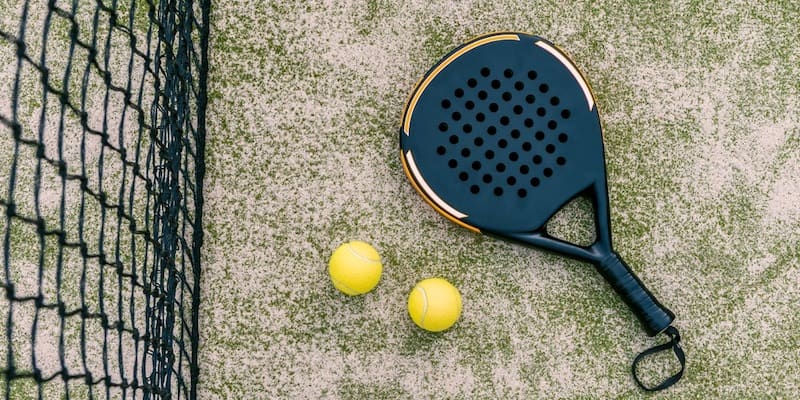
The essential elements to play paddle tennis are:
- The shovels. Equivalent to tennis rackets, they have a flat and round surface, smooth or rough, and are 45.5 centimeters long, 26 centimeters wide and 38 millimeters thick as maximum measurements. In addition, they are attached to the player's wrist with a string to prevent them from slipping out of the player's hand. These rackets can be of three types: diamond (higher power), teardrop (balance between power and control) and round (higher control).
- The ball. It is a rubber sphere with a uniform outer surface, green or yellow, whose diameter ranges between 6.32 and 6.77 centimeters and whose weight does not exceed 59.4 grams. The rebounding capacity of the balls is controlled, and varies if played above 500 meters above sea level.
- The network. As in tennis, the paddle tennis court is divided in two by a net 88 centimeters high, suspended in the air by a metal thread.
Difference between tennis and padel
Padel is very often compared to tennis, to the point that it is sometimes called padel-tennis. However, beyond the presence of the net and rackets, both sports differ in many aspects, such as:
| Tennis | Padel |
|---|---|
| It is played on open cement, artificial grass or clay courts, but without walls. | It is played on closed synthetic material courts, with walls that intervene in the game. |
| It can be played individually or in pairs. | It is always played in pairs. |
| It is played with balls with greater pressure | It is played with balls with lower pressure, ideal for bouncing off walls. |
| It is played with larger rackets, with a larger impact surface. | It is played with smaller and narrower paddles. |
Continue with: Individual sports
References
- “World Paddle Championship” on Wikipedia.
- “Etymology of Paddle” in the Online Spanish Etymological Dictionary.
- “Paddle tennis, a very complete sport with multiple benefits” (video) on Canal Sur.
- “History of Paddle: we tell you how the fashionable sport emerged” in Padel Addict.
- “Are there differences between paddle tennis and tennis? What are they?” in Only Tennis.
- “Paddle tennis (sport)” in The Encyclopaedia Britannica.

